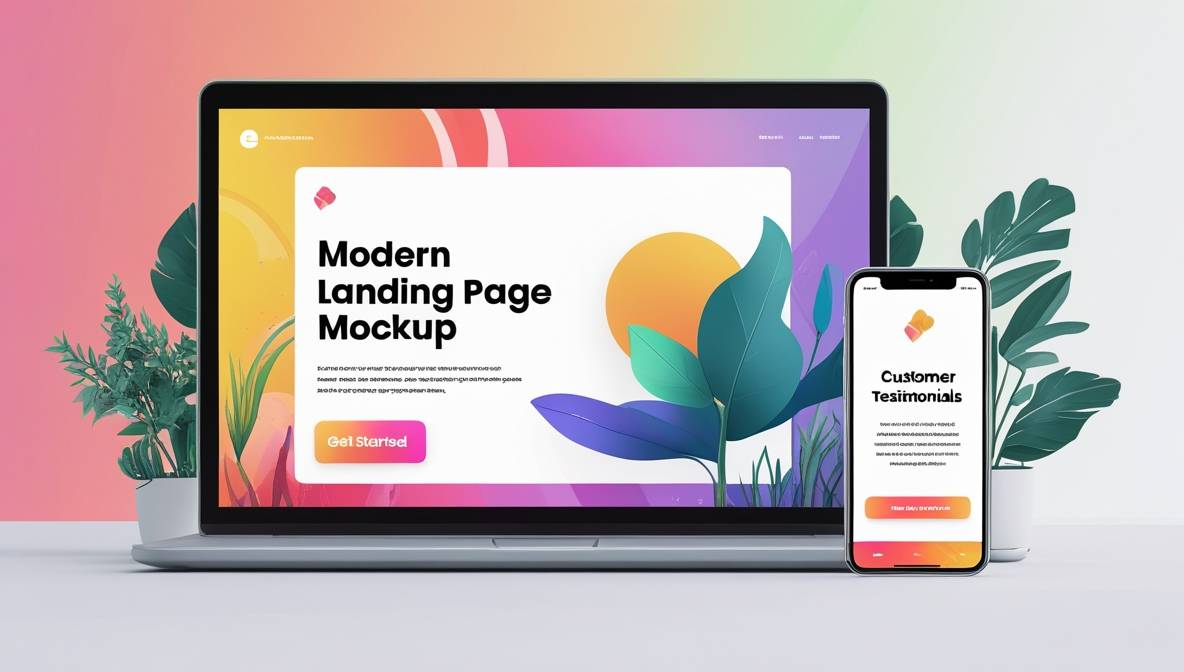Landing pages are the backbone of successful digital marketing campaigns. Whether you’re promoting an e-commerce store, a service, or a lead magnet, a well-crafted landing page can turn casual visitors into loyal customers. This guide breaks down the essentials of building high-converting landing pages, from design principles to traffic-driving strategies.
What Is a Landing Page?
A landing page is a dedicated web page designed to guide visitors toward a single objective: signing up, purchasing, downloading, or subscribing. Unlike standard website pages, it strips away distractions and focuses entirely on conversion.
Key Characteristics:
- Goal-Oriented: Built for specific campaigns or offers.
- Audience-Targeted: Tailored to resonate with a particular audience segment.
- Measurable: Trackable through metrics like click-through rates and conversions.
Essential Elements of a High-Converting Landing Page
Effective landing pages include these non-negotiable components:
| Element | Purpose |
|---|---|
| Headline | Grabs attention and states the value proposition. |
| Subheading | Expands on the headline with concise details. |
| Call-to-Action (CTA) | Directs users to take action (e.g., “Get Started” or “Download Now”). |
| Lead Capture Form | Collects essential visitor information (e.g., email or phone number). |
| Visuals | High-quality images or videos that reinforce the offer. |
| Social Proof | Testimonials, reviews, or trust badges to build credibility. |
For example, tools like top landing page builders simplify the process of integrating these elements without coding.
Designing for Maximum Impact
A clutter-free, visually balanced layout is critical. Follow these design best practices:
- Simplify the Layout
Remove unnecessary links, menus, or text. Focus on guiding the visitor’s eye toward the CTA. - Optimize for Mobile
Over 60% of web traffic comes from mobile devices. Use responsive themes like those listed in fastest free WordPress themes to ensure seamless mobile performance. - Speed Matters
Slow-loading pages drive visitors away. Implement caching plugins (see top WordPress cache plugins) and compress images to reduce load times. - Color and Contrast
Use brand-aligned colors strategically. For instance, red CTAs can evoke urgency, while blue instills trust.
Writing Copy That Converts
Compelling copy balances clarity and persuasion:
- Headline: Start with the primary benefit. Example: “Double Your Sales in 30 Days.”
- Subheadline: Add context: “Join 5,000+ marketers who’ve boosted revenue with our toolkit.”
- Benefits Over Features: Instead of “Advanced Analytics,” say “Track Real-Time Sales Growth.”
- Pain Points: Address frustrations: “Tired of Wasting Ad Budget?”
Incorporate urgency with phrases like “Limited-Time Offer” or “Exclusive Access.”
Driving Traffic to Your Landing Page
Even the best landing page won’t convert without visitors. Use these channels:
- SEO Optimization
Target keywords like “best landing page practices” and optimize meta tags. Learn more in our complete SEO guide. - PPC Campaigns
Run Google Ads or social media ads targeting high-intent keywords. - Email Marketing
Promote your landing page via newsletters. Tools like email marketing plugins streamline campaign management. - Social Media
Share snippets on Instagram or Facebook. Grow your audience with tips from how to increase Instagram followers.
Avoiding Common Mistakes
- Overloading Forms: Only ask for essential details (e.g., email instead of phone number).
- Vague CTAs: Replace “Submit” with “Get Your Free E-Book.”
- Ignoring Analytics: Use tools like Google Analytics or heatmaps to identify drop-off points.
Final Tips for Success
- A/B Test Everything: Experiment with headlines, CTAs, and layouts.
- Update Regularly: Refresh content and visuals to stay relevant.
- Leverage Automation: Use AI tools for tasks like content rewriting or chatbot integration.
By integrating these strategies, your landing pages will not only attract visitors but also drive meaningful results. For more insights, explore our WordPress guides or learn how to migrate from Blogger to WordPress.

